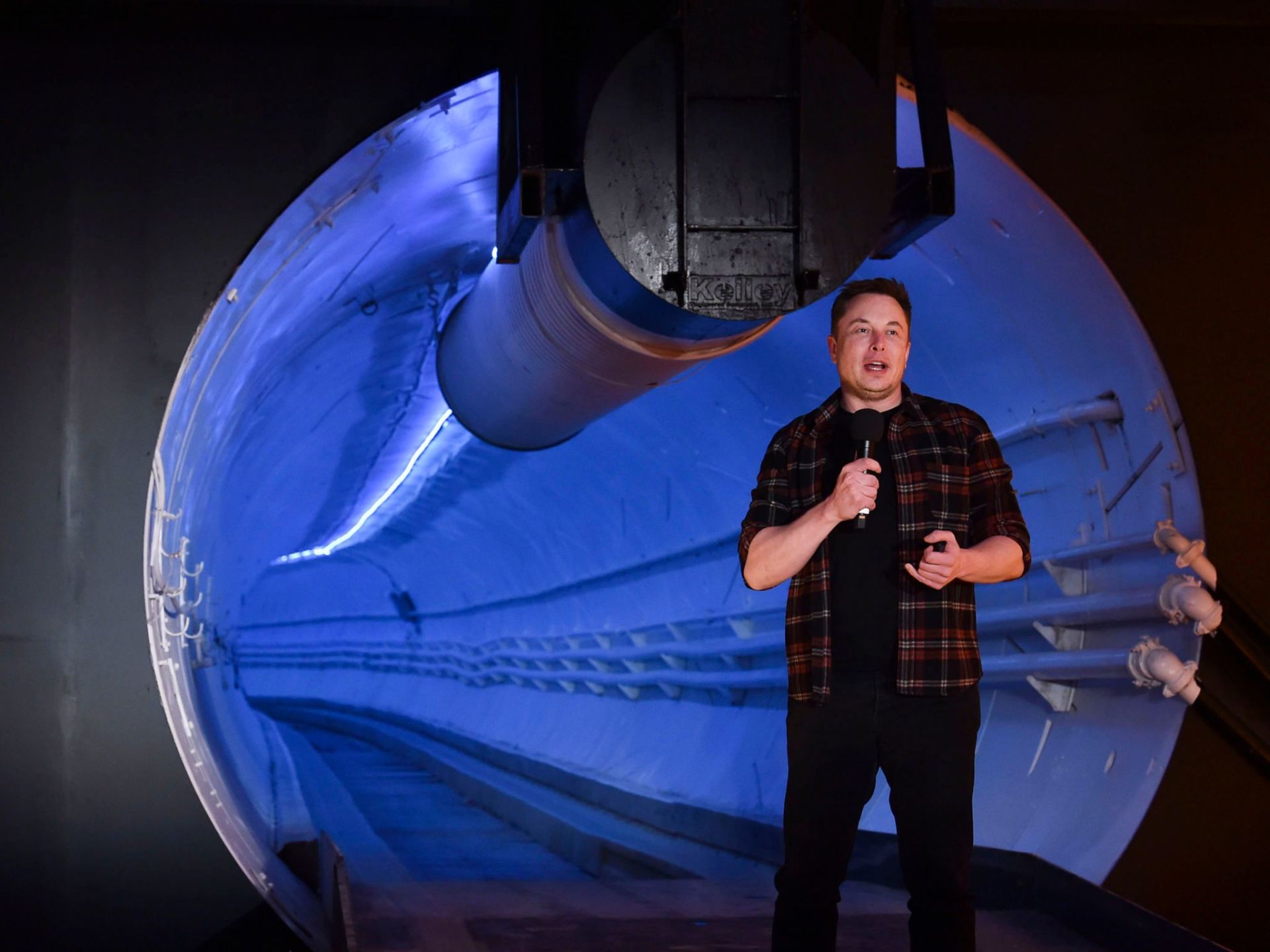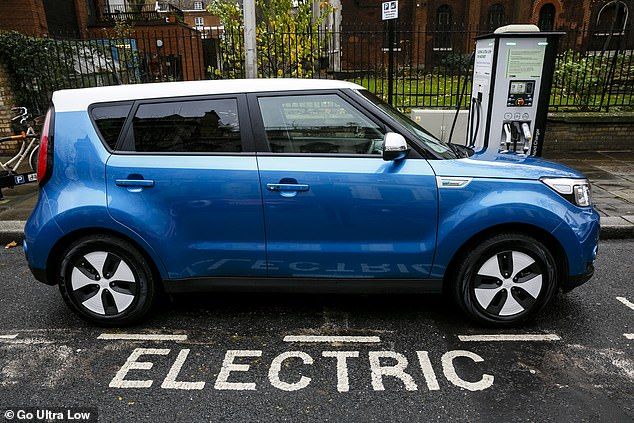
Guests were given the first chance to experience the subterranean tube, riding on a Tesla Model S for around a mile.
At what Mr Musk's Boring Company has called O'Leary Station, a wall-less lift lowered the electric car 30ft below the surface to the tunnel.
Demonstration rides were run through the tube at 40mph, but Mr Musk says vehicles could eventually travel through at 150mph.
The tech billionaire described the first ride as "epic".
He said: "For me it was a eureka moment. I was like, 'This thing is going to damn well work'."
He said the first ride was bumpy because his company ran out of time, leaving some problems with the speed of his paving machine.
But he promised the future systems will be "smooth as glass", adding: "This is just a prototype, that's why it's a little rough around the edges".
The first rides come two years after Mr Musk tweeted about how LA traffic was driving him crazy, suggesting he would buy a boring machine and just start digging through the city to find an alternative.
He later added: "I am actually going to do this. Defeating traffic is the ultimate boss battle."
Mr Musk set up The Boring Company, intended to be a playful name, but has only shared a handful of pictures and videos of the progress.
But at an event in LA, he explained in much more detail how the "loop" system could work on a larger scale beneath cities around the world.
Vehicles could be lowered into the system in wall-less lifts the size of two cars, with the lifts able to be placed wherever a car could go.
He said every car could run at top speed when inside the arteries, slowing down to enter and exit.
He said: "It's much more like an underground highway than it is a subway.
"It's not like you're going through a whole series of stops. Nope, the main arteries will be going super fast, and it's only when you want to get off the loop system that you slow down."
The entrepreneur explained he had scrapped a previous plan to run the cars on platforms called skates, changing his idea to fit the cars with specially designed wheels which will pop out perpendicular to the car's normal tyres and run along the track.
These wheels would cost about $200-300 (£157-236) per car.
He added that tunnels are the safest places to be in an earthquake, and dismissed concerns about noise and disruption created while they are being built.
Mr Musk said: "The footsteps of someone walking past your house will be more noticeable than a tunnel being dug under your house."
The test tunnel cost $10m (£7.6m) to be built, much less than the $1bn per mile his company says most tunnels cost.
He cited smarter tools, elimination of middle men, and more powerful boring machines among his cost-cutting methods.
He also said the dirt is being turned into bricks and sold for 10c apiece instead of being lifted out.
Many fleets will experience ‘quite a steep learning curve’ next year as a wider choice of vehicles offering different fuel types come to market, says Arval.
Shaun Sadlier (pictured), head of consulting at Arval, said that fleet decision-makers were now facing a new world where they need to become proficient in matching fuel types to specific needs.
“The dominance of diesel is coming to an end," he said. "We are in a situation where the fleet of the very near future is likely to consist of a wide fuel mix to meet specific driver and business needs.
“This places the fleet decision-maker in a situation where they need to be able to look at established fuel types, such as petrol and diesel, alongside newer technologies, like hybrids and electric vehicles, and be able to make a credible decision about which works for which driver in which application.
“Making these calls and constructing appropriate choice lists is not always easy and, for many, there will be quite a steep learning curve as they get to grips with a changing fleet fuels scenario.”
Sadlier said that with the choice of ultra-low emission vehicles growing all the time, it was not just a question of deciding whether a driver should be using a plug-in hybrid or a petrol car, for example, but being able to identify the advantages of specific models.
He added that when it comes to PHEVs and electric vehicles, the technology is "moving quite quickly" and that fleet operators "may need visibility of the models on the horizon, as well as those currently available".

London is the only UK city on track to hit electric car targets - and the last petrol and diesel model has to be sold in the early 2030s to meet objectives
- The IMI said the UK is already behind targets for electric vehicle infrastructure
- This includes not enough public charging points with 1 for every 8 EV on the road
- It also warned that just 3% of technicians are trained to repair plug-in cars
- Most of these mechanics work in the franchised dealer network and not in independent garages, meaning expensive maintenance bills for used EV buyers
- There are also concerns that there won't be enough low-carbon liquid fuels to power reamining petrol and diesel models on the road by 2050